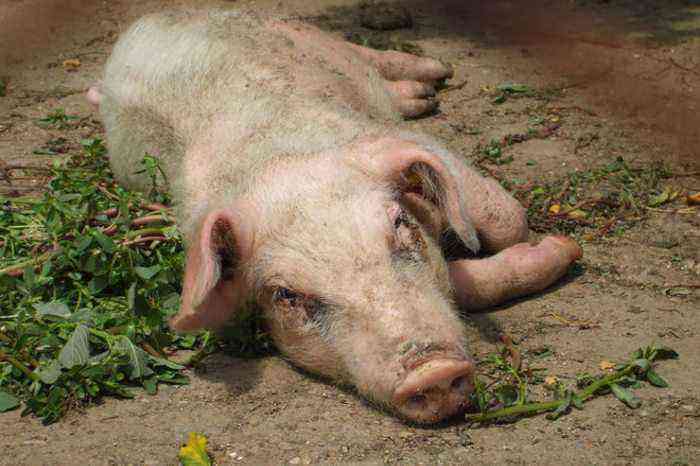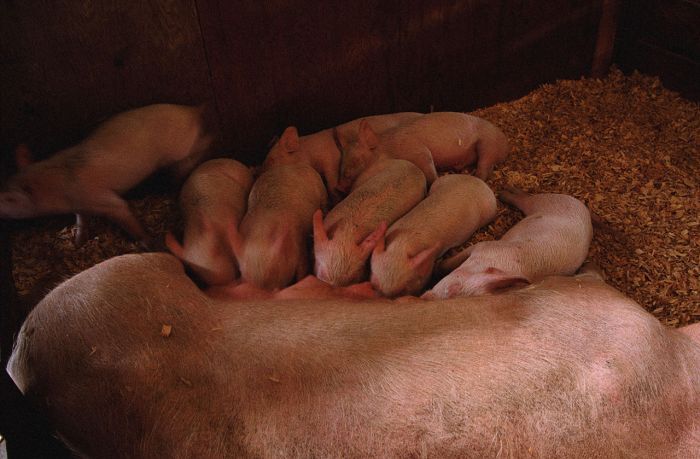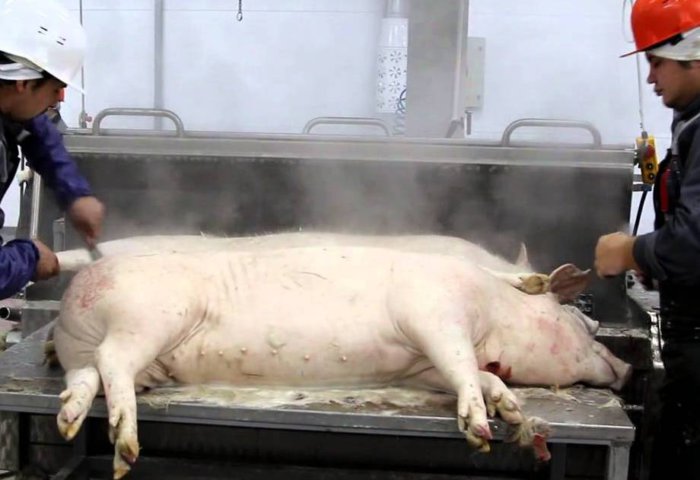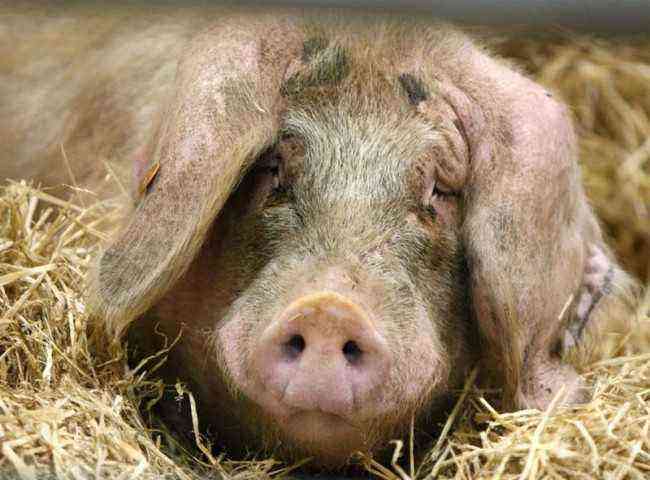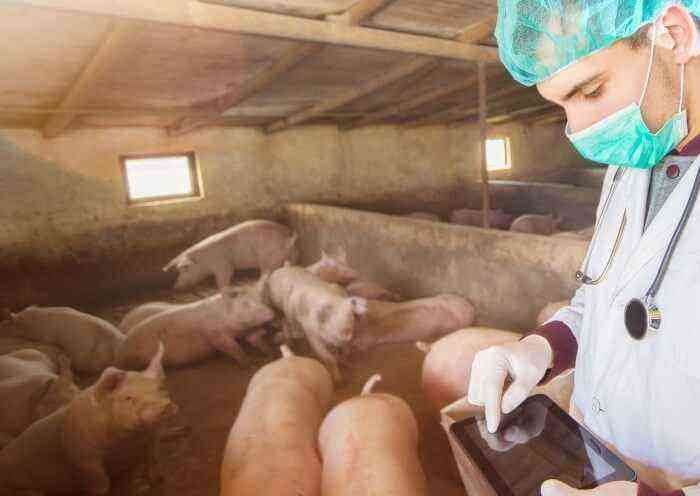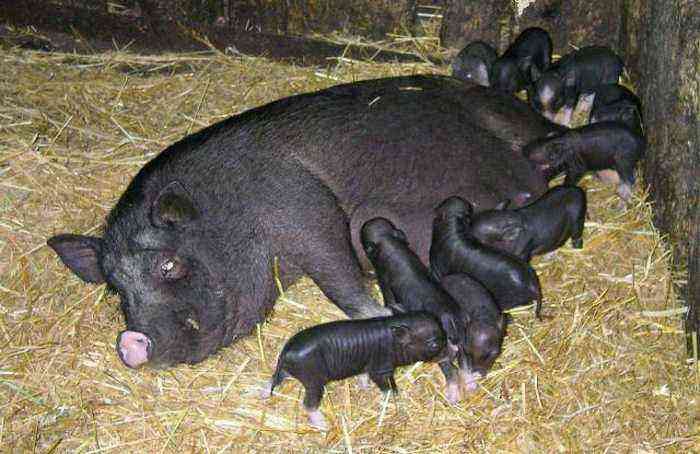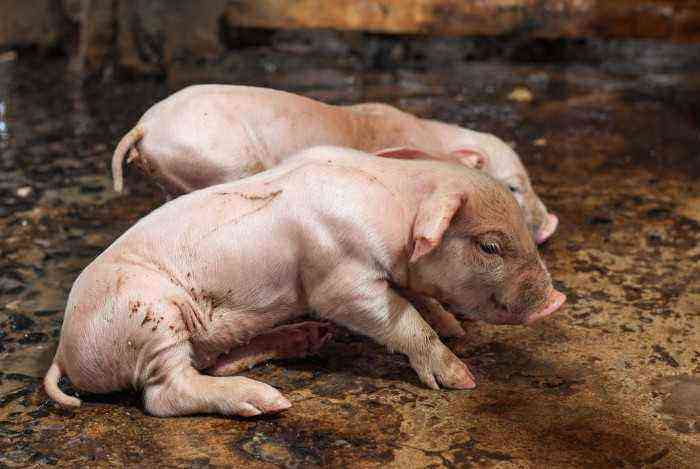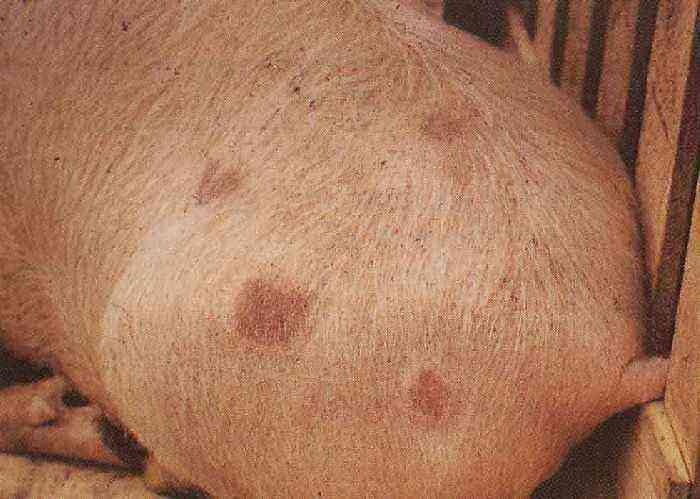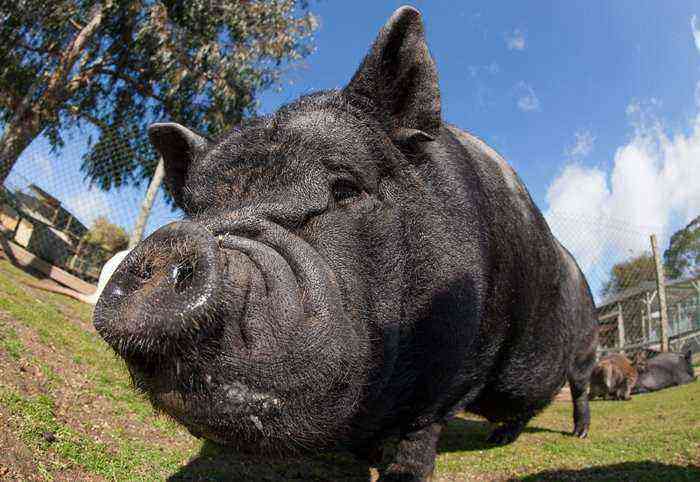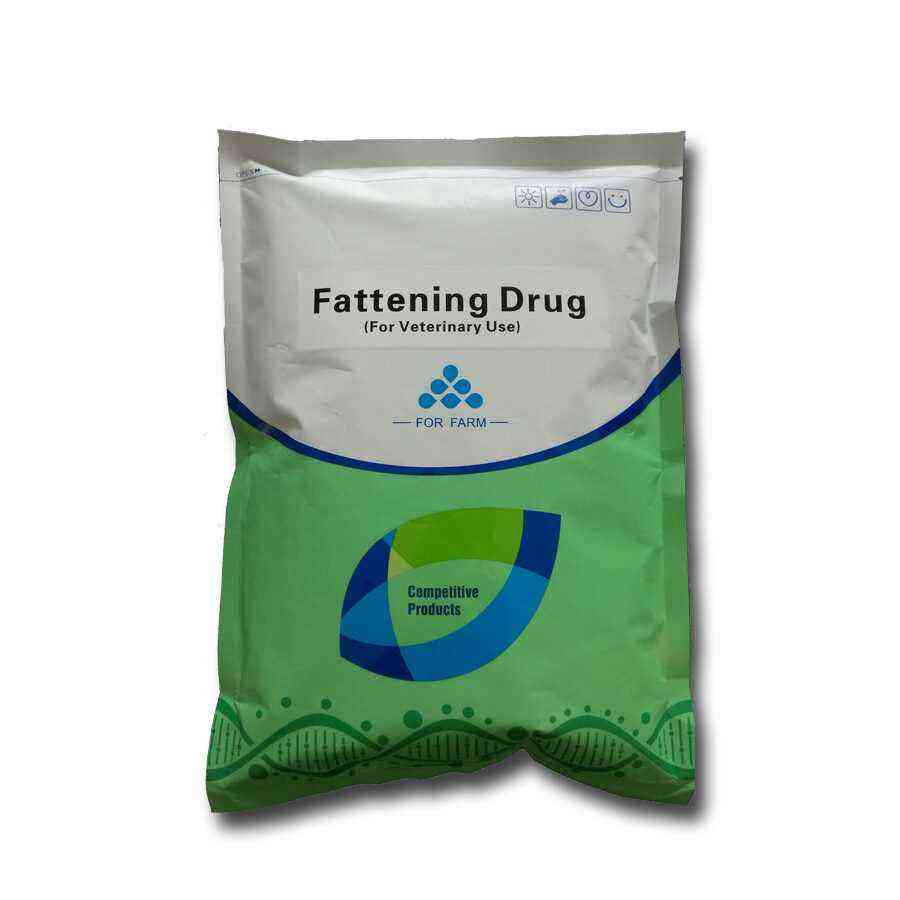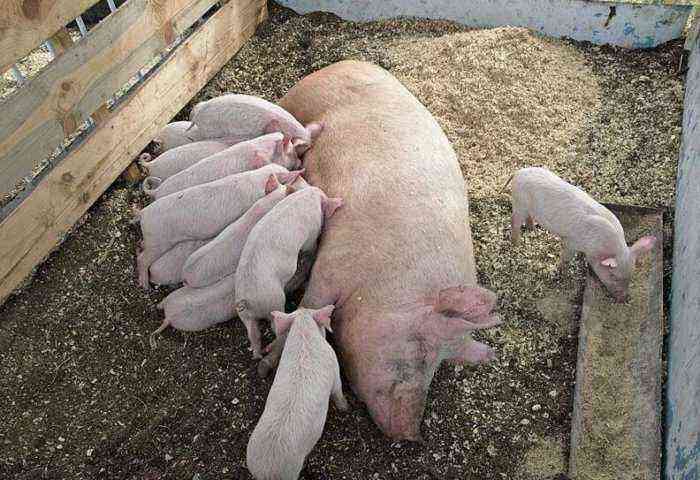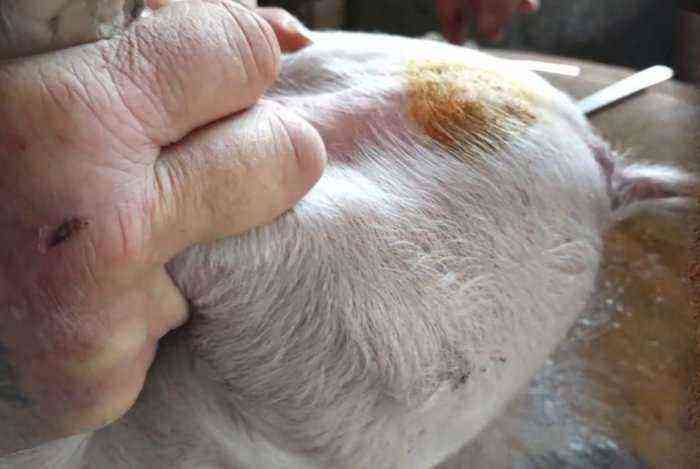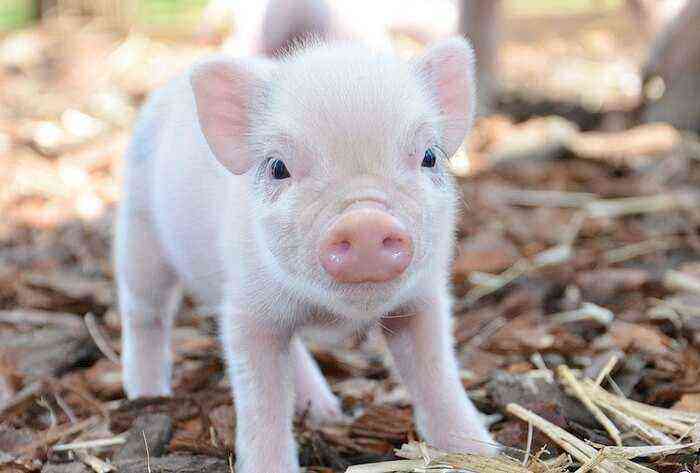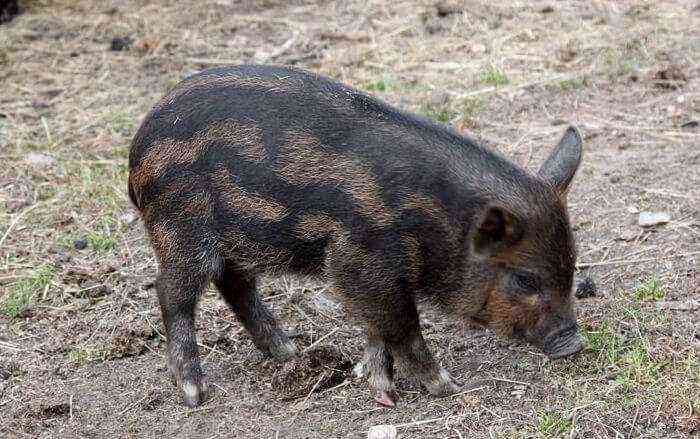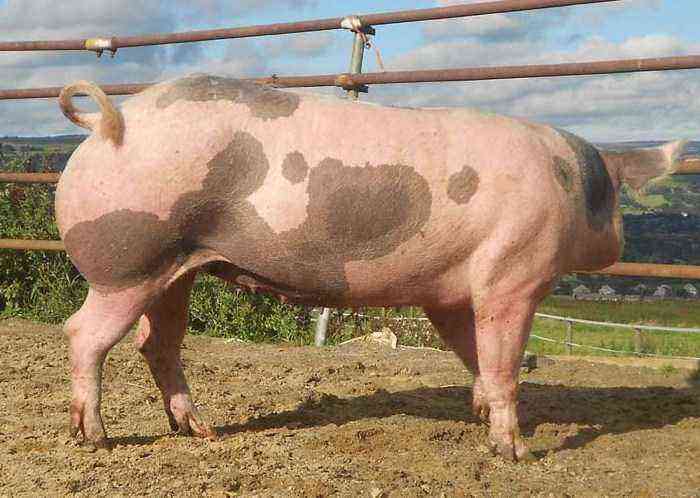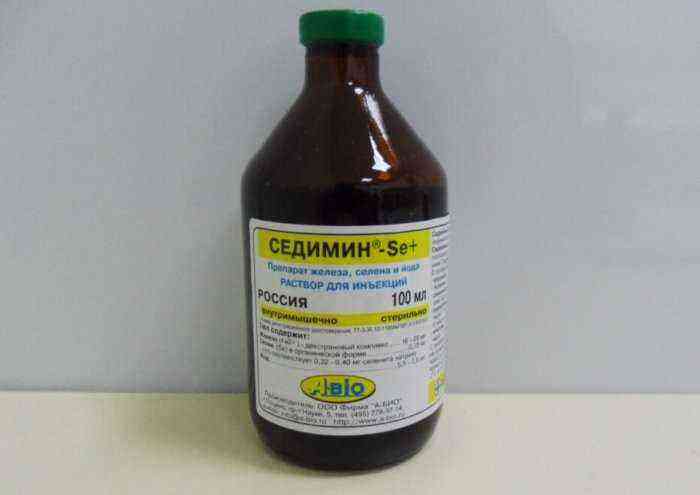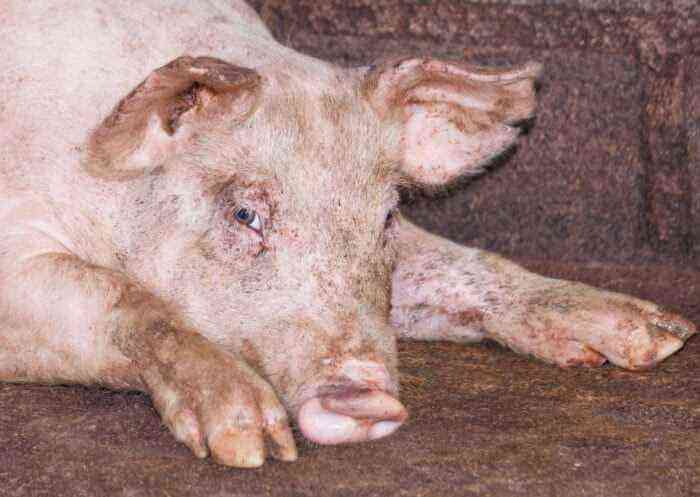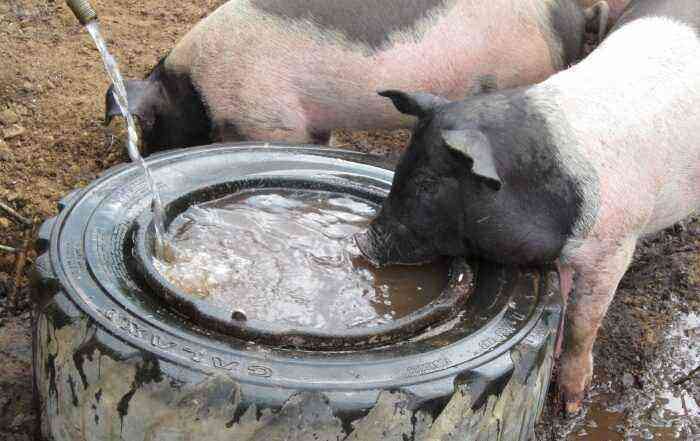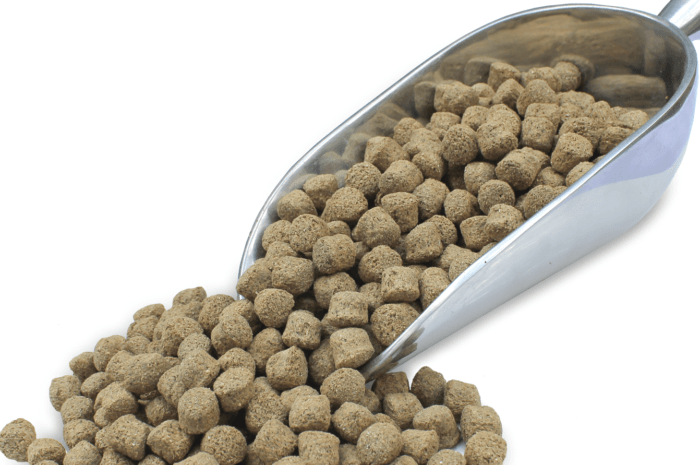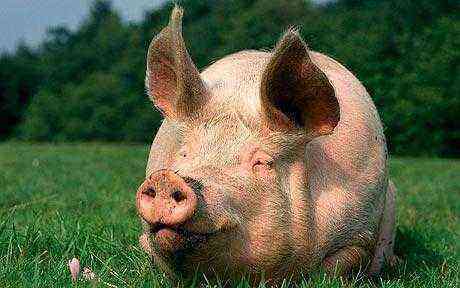Little piglets are highly sensitive to infections and various negative environmental factors. And if such an effect is reflected in the circulatory system of the animal, then the ears of young animals can serve as a pronounced indicator of pathological changes. In such situations, they acquire a bluish color, which indicates an insufficient supply of blood, and, consequently, oxygen. At the same time, if the piglet’s ears turn blue, you need to know what to do and why this happens.
Cyanosis of the ears
Causes
Blue ears in most cases is a sign of heart failure in an animal. As a result of certain failures in the body, the volume of arterial blood flow to various parts of the body decreases. Accordingly, the amount of incoming oxygen also declines. And since the vessels in the ears of the pig are as close as possible to the surface of the skin, here this phenomenon is most pronounced and is accompanied by cyanosis of the skin.
There are many reasons why the skin on the ears becomes bluish. The main ones include:
- Heart problems, including damage to the heart muscle.
- Poisoning, which are the result of the activity of pathogenic microflora or as a result of contact with pesticides, poisons and other substances hazardous to health.
- Diseases of the blood.
Also, a slight blue of the ears may indicate that the temperature in the room where the animals are kept is too low. Piglets at an early age are extremely sensitive to drafts and cold, and self-regulation in their body is not yet sufficiently developed.
But, it should be noted that quite often the cause of this phenomenon can be infectious diseases.
Infectious diseases in piglets
Cyanosis of the ears, and in some cases also of the tail, can cause a wide variety of invasive diseases in pigs.
Respiratory and reproductive syndrome
Due to the sharp and pronounced blue of the ears, this disease was popularly called the “blue ear”. The causative agent of the disease is a virus that enters the body of a healthy animal directly from infected individuals, through food, care items.
Respiratory and reproductive syndrome in pigs
The infection can actively spread at any time of the year. After an incubation period that lasts from 4 to 30 days, the disease proceeds in an acute or subclinical form. In the acute course of RMS, piglets show the following symptoms:
- blue patch, ears, belly, tip of tail;
- a sharp increase in temperature, which can reach 41 degrees;
- decreased appetite;
- general depression of the animal and decreased activity;
- when tightened with treatment, the tissues at the tips of the ears and tail begin to gradually die off.
Tellingly, the virus that develops in the body significantly weakens the already weak immune system of the piglet. As a result, the most favorable conditions are created for the development of secondary diseases caused by pathogenic microflora. In this case, the main symptoms are supplemented by deeper breathing, shortness of breath, and a strong cough. In some cases, there are signs of pneumonia.
What else is dangerous with respiratory and reproductive syndrome is that adult pigs can also become infected with it. If such an infection enters the body of a pregnant sow, then often the pregnancy ends in an abortion. If the fetus still does not die, then the offspring often show deviations in development.
Aujeszky’s disease
As already noted, other infectious diseases can cause cyanosis of the ears. Often such a symptom can be traced with Aujeszky’s disease or pseudorabies. It affects mainly the central nervous system. This ailment especially affects small piglets. In 30% of cases, a fatal outcome is traced, even despite the measures taken.
Symptoms of pseudorabies in addition to tissue cyanosis are:
- a sharp decrease in appetite;
- vomiting;
- intense increase in body temperature;
- highly agitated state and anxiety;
- convulsions;
- constant and uncontrolled fluid intake.
Aujeszky’s disease is characterized by a rapid spread. In 7-10 days, from one infected individual, the entire livestock on the farm can get sick. In this case, the pathogen is transmitted through tactile contact between animals. Piglets can also become infected through sow’s milk. The carrier of the disease is sometimes infected rodents.
Aujeszky’s disease
It is worth noting that the treatment for pseudorabies is very expensive. Therefore, veterinarians in most cases recommend the slaughter of animals. Pork after slaughter is allowed to eat only after prolonged heat treatment.
chlamydia
This is another common disease in which the skin around the ears turns blue. The causative agent of chlamydia is microscopic bacteria – chlamydia. When ingested, they affect the intestines, central nervous system, and respiratory tract.
The most susceptible to infection are pregnant sows and newborn piglets. The spread of the disease is not limited to a specific time of year. It is especially common in stall keeping, supplemented by an unbalanced diet and non-compliance with the conditions for caring for animals. The disease is transmitted in the following ways:
- Through body secretions of pigs. Particularly dangerous in this case are water and particles of the placenta after farrowing the sow.
- Through milk to piglets.
- Due to infected rodents and birds.
Piglets can also become infected inside their mother’s womb. In this case, the bacteria enter through the placenta to the fetus, and invasion occurs. In most cases of such infection, the fetus dies.
In newborn piglets infected with chlamydia, the following clinical manifestations of the disease can be traced:
- fever (40,5 degrees) and fever;
- frequent convulsions;
- general depression of the animal;
- sometimes there is diarrhea.
About 60-70% of offspring with these symptoms die within the next 3 days. Those individuals who nevertheless survive are distinguished by a strong lag in development, a blue tint of the skin, and an underdeveloped sucking reflex.
Weak sucking reflex
In weaned piglets, chlamydia is complemented by other symptoms:
- periodic fever, which can disappear and reappear;
- blue skin on the ears, tail and belly;
- refusal of food;
- decrease in activity. Piglet just lies most of the time;
- strong dry cough;
- gray discharge from the nasal cavity;
- malfunctions of the digestive system;
- drastic weight loss.
Important! In some cases, chlamydia can manifest itself in a latent asymptomatic form. In this case, it can only be determined in the laboratory.
salmonellosis
It is widely distributed in private and industrial farms that do not comply with sanitary standards for keeping animals. The infection enters the body of the animal with water or feed, after which it begins to actively multiply. This disease has a much stronger effect on piglets than on adults, due to insufficient development of immunity. In adult pigs, it develops mainly as a secondary disease against the background of the main deviation.
The following symptoms accompany the course of the disease:
- Fever.
- Diarrhea. Fecal matter becomes gray in color and may contain particles of blood.
- Decreased appetite or complete disregard for food.
- Disturbed breathing.
- Blue tip of tail and ears.
- Conjunctivitis.
If measures are not taken in time, then from 50 to 70% of the young will die within a week.
Dysentery
This disease affects the gastrointestinal tract and is highly infectious. Piglets at weaning age are most susceptible to infection. The exact causative agent of the disease has not yet been identified. But it is reliably known that the invasion is carried out through food, care items, bedding, on which feces and other secretions of sick individuals fell. The incubation period of infection ranges from 2 to 27 days.
Dysentery in pigs
The symptoms of dysentery are as follows:
- persistent diarrhea;
- fecal masses gradually change their color from gray to dark brown. At the same time, blood impurities are traced in the feces;
- a sharp decrease in appetite;
- intensive decrease in body weight of the animal;
- the temperature is in the range of 40-41 degrees;
- bruising of the ears.
Mortality from such a disease can reach 30% of the total number of cases. In the process of development, the infection causes partial necrosis of intestinal tissues, as well as the appearance of ulcers. In some cases, even after a successful treatment, relapses can be traced in animals.
Attention! Sometimes the bluish color of the skin in newborn pigs or weaners may indicate invasion by pathogens of mycoplasmosis or leptosperosis.
Treatment
If the cause of cyanosis of the ears in a piglet is still an infectious disease, you should immediately contact a veterinarian who will take remedial measures. At the same time, the key to the effectiveness of the entire treatment process is the correct diagnosis, which is carried out in the laboratory. Only on its basis can you choose the right drugs.
Respiratory and reproductive syndrome
If the cause of the blue skin of young animals is the respiratory-reproductive syndrome, then all forces are directed exclusively to the fight against emerging secondary diseases. A complete vaccine aimed at eliminating the causative agent of RRS does not currently exist. Treatment of secondary diseases is carried out on the basis of antibiotics and drugs that strengthen the immune system.
Of the antibiotics, tetracycline or penicillin is the most suitable in this case. Treatment with these drugs is carried out for 4 weeks. In this case, the temperature in the barn should be observed at least 21 degrees, and gradually increase the intensity of feeding for the duration of treatment. Tellingly, after an animal recovers from RMS, it develops effective defense mechanisms against this disease.
Pseudo-religion
When Aujeszky’s disease is detected, the treatment of young animals is carried out in almost the same way as in the case of respiratory syndrome. There is no effective medicine. In the initial phase of the development of infection, the animal is given funds that are produced on the basis of a dried culture of the pathogen. In some cases, they give a positive effect.
chlamydia
There are certain medical methods of struggle against chlamydia. But, since the cost of such drugs is extremely high, the treatment of offspring is not economically feasible. Therefore, all infected animals and those whose condition raises suspicions of the presence of chlamydia are determined for slaughter. At the request of the veterinarian, slaughter is carried out at a sanitary slaughterhouse in compliance with all necessary rules. The meat of an animal after slaughter can be used if it does not show signs of damage by the pathogen. In addition, it is pre-boiled thoroughly.
Pig to slaughter
salmonellosis
Timely identified salmonellosis is treated with antibiotics, special serum and drugs that kill bacteria in the body (bacteriophages). Of the antibiotics, sulfanilamide or polymyxin are most often attributed. Also, Furazolidone in doses of 10 mg per kilogram of piglet weight has proven itself as an effective means of combating the pathogen. Give it three times a day mixed with milk.
Dysentery
Dysentery in piglets is treated only in the initial stage of the disease. In this case, antidysenteric serum gives an effective result. Antibiotics help to enhance its effect. In this case, levomycetin or tetracycline is used.
The only general measure for each of the cases is the operational isolation of the diseased animal. In this case, whatever the reason for the appearance of cyanosis of the tissues of the ears in young animals, it is necessary to seek help from specialists in the veterinary service.
Prevention
In any case, whatever the reason for the appearance of blue ears and piglets, all preventive measures are 80% in compliance with the quality conditions for keeping animals. In this regard, the following stand out:
- Balanced feeding of pigs and piglets, which is constantly or periodically supplemented with mineral and vitamin complexes.
- Cleanliness of machines and barn in general. Manure, old bedding, food residues must be cleaned regularly.
- Insulation of livestock buildings and elimination of drafts. Often, it is precisely because of the reduced temperature that the immune system of young animals weakens, which significantly reduces the body’s resistance to pathogens.
- Regular inspection of offspring and adult pigs by a veterinarian on large pig farms.
- Urgent isolation of animals, in the appearance and behavior of which symptoms of the above health problems are revealed. Immediately after this, a request for an examination by a specialist follows.
- High-quality periodic disinfection of machines and pastures with a weak solution of formalin, alkali, sodium hydroxide. The place where the sick piglet is kept and all the means that were used to care for it are disinfected unscheduled and especially carefully.
Also, in addition to ensuring optimal conditions of detention, it is necessary to vaccinate newborn piglets and sows against the most common diseases. To prevent diseases that cause blue skin, antidysenteric serums (at a dose of 15-20 ml), formulations against paratyphoid and chlamydia are used. RRS is prevented by introducing a special strain of an artificially bred pathogen.
Conclusion
There can be many reasons for blue ears in piglets. But, in any case, such a sign is a clear indicator that something is wrong. At the same time, it is necessary to strengthen control over a suspicious piglet and prepare in advance to take emergency measures.
